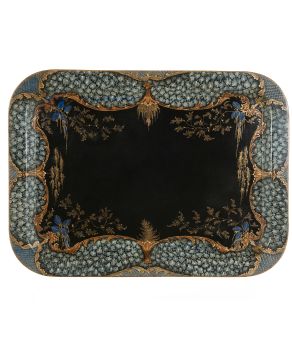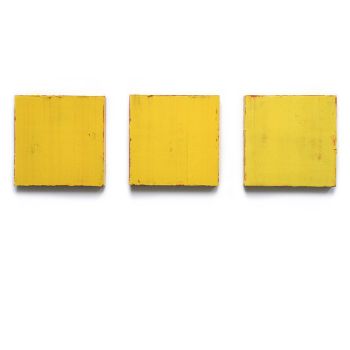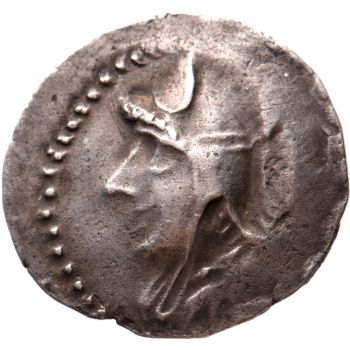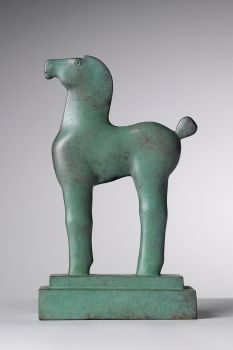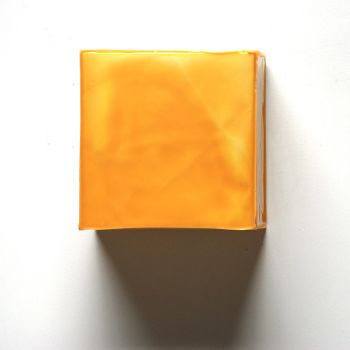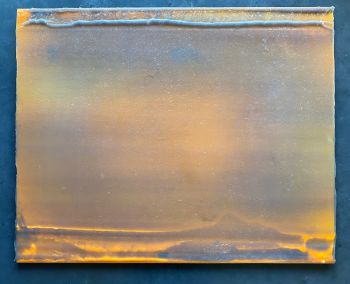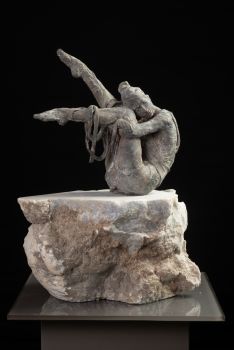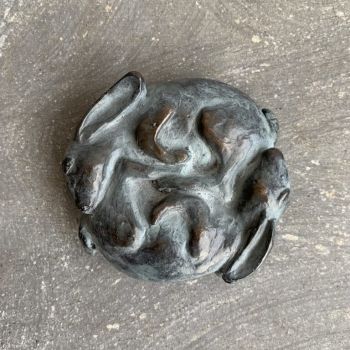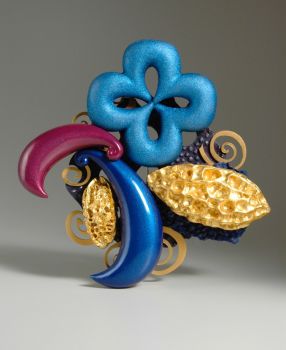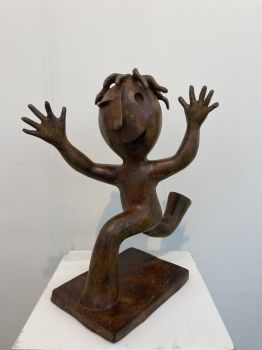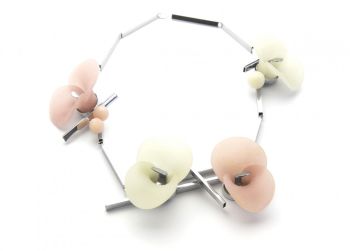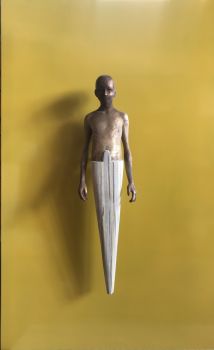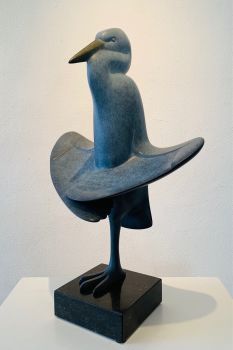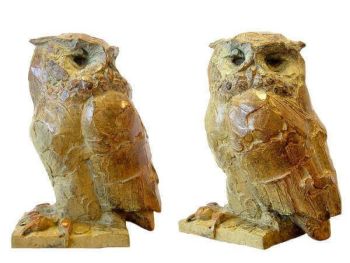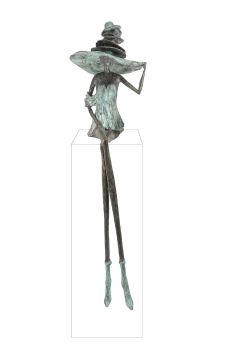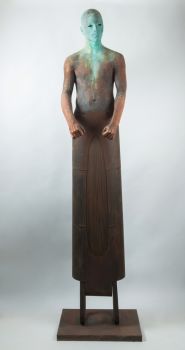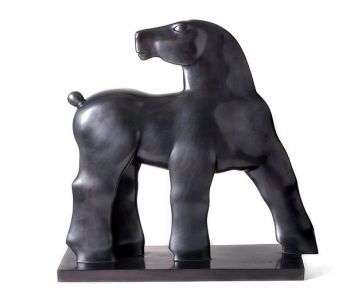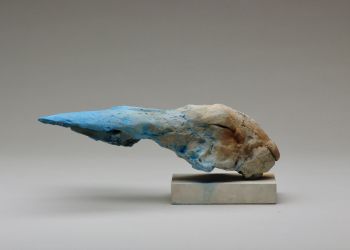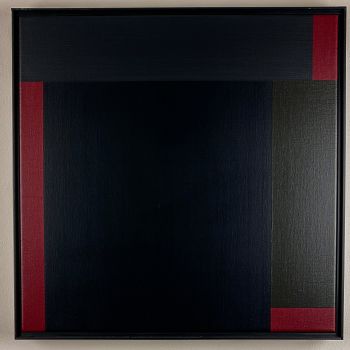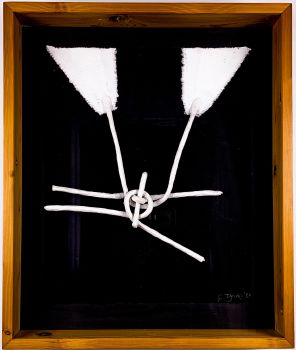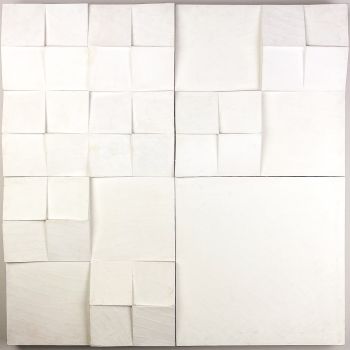A multicoloured enameled copper deep plate – 1960’s or 1970’s 1960 - 1979
Saara Hopea
MetalRed copperEnamel
4 cm, ø 21 cm
ConditionVery good
€ 825
Van Kerkhoff Art
- About the artworkA multicoloured enameled copper deep plate, with spot textured areas. Handmade by Saara Hopea in her own workshop in the 1960’s or 1970’s. The plate is signed on the reverse by the artist in diamondpen: Saara.
Saara Hopea started making these copper enameled plates in 1960 when she lived in New York City. The enameling on copper she learned from her husband Oppi Untracht who taught enameling at the Brooklyn Museum Art school. In a very short time she mastered this craft and in the early 1960’s several of her plates were bought by the Museum of Modern Art. The copper plates Saara Hopea used were hand lathe spun by Abram Bender in New York.
Saara’s enamel work was interupted between 1963 and 1967 when she lived in India and Nepal. When she moved back to Finland she established a new workshop in Porvoo. She kept making these enameled plates by hand until 1980.
About Saara Hopea
Saara Elisabet Hopea (Porvoo 1925 – Porvoo 1984), a prominent Finnish designer renowned for her innovative creations in art-glass, furniture, and jewelry, left an indelible mark on the world of design during her lifetime. Born in 1925 in the scenic town of Porvoo, situated in the southern region of Finland, Hopea’s artistic prowess and unwavering dedication to her craft propelled her to international recognition.
The daughter of Ossian Hopea and Lempi Westerlund, who owned a reputable goldsmithing company, Hopea was exposed to the world of design from an early age. After completing her secondary education, she honed her skills at the Interior Design Department of the Central School of Art and Design, now known as the esteemed Aalto University of Art and Design.
In 1946, Hopea proudly graduated, armed with a wealth of knowledge and a burning passion for design. She embarked on her professional journey as an illustrator before joining the lighting factory of Taito Oy, a renowned establishment under the guidance of celebrated designer Paavo Tynell.
However, it was in the early 1950s that Saara Hopea found her true calling when she delved into the realm of glass design. With an innate talent and an insatiable curiosity, she joined the Nuutajärvi glass factory, where she had the privilege of working alongside the esteemed artistic director, Kaj Franck.
In 1959, tragedy struck as Hopea’s father passed away, and she courageously took the helm of the family business, Ossian Hopea Oy. As the artistic director from 1959 to 1960 and later from 1967, she left an indelible mark on the company’s direction and was responsible for numerous iconic jewelry designs.
Her creative journey took an unexpected turn in 1960 when she married Oppi Untracht, an accomplished American goldsmith, photographer, and writer. Together, they embarked on an adventurous life that led them to reside in New York City, Nepal, and India, before eventually settling in Porvoo in 1967.
Hopea’s exceptional designs earned her widespread acclaim and accolades. Her glass creations were honored with silver medals at the esteemed Milan Triennials in both 1954 and 1957, showcasing her mastery of the craft on an international stage. She also received notable recognition closer to home, including the prestigious Porvoo City Culture Prize in 1981 and the State Arts and Crafts Prize in 1982.
Today, Saara Hopea’s impact resonates globally, with her works showcased in renowned institutions. The British Museum in London boasts an impressive collection of 28 of her pieces, while the Museum of Modern Art (MoMA) in New York proudly displays 11 of her distinctive creations.
Although she left this world in 1984, Hopea’s artistic legacy continues to inspire and captivate design enthusiasts. Her retrospective exhibition at the Museum of Arts and Crafts in Helsinki in 1987 served as a testament to her enduring influence, ensuring her innovative designs remain cherished and celebrated for generations to come.
Marked
Marked in diamondpen underneath the base: Saara
Execution
Made in her own workshop: 1960-1963; 1967-1979
Condition
This plate is in very good vintage condition. No chips, no dents. some minor scratches.
Literature
Oppi Untracht – Saara Hopea-Untracht: her life and work. P. 202-213
Dimensions
Height 4,5 cm
Diameter 21 cm
Weight 426 grams - About the artist
Saara Hopea had a prolific career in various design fields, leaving a significant mark on the Finnish artistic landscape of the 1950s. Her journey began in the realm of furniture design, where she honed her skills from 1946 to 1948. Seeking new opportunities, she then joined forces with renowned metalsmith Paavo Tynell's company, where she worked until 1952.
During this time, she contributed to the Nuutajärvi glassworks, where her creations became a shining embodiment of the minimalist aesthetic that defined Finnish style in the 1950s, influenced by the principles of the Bauhaus design philosophy. Notably, after her father's passing in 1948, she took on the task of designing silverware for his shop in Porvoo.
A turning point in Hopea's life occurred when she married and relocated to New York with her husband. It was here that she embarked on a new artistic path, exploring the realm of enamel work. Through her experimentation with overfiring transparent enamels on copper, she achieved remarkable results that bestowed her pieces with a spontaneous and painterly appearance, characterized by vibrant colors and remarkable depth. Her exquisite enamel creations found their way into the hands of discerning patrons through exclusive shops.
The couple's thirst for knowledge and artistic inspiration led them to embark on a remarkable journey through Nepal and India, spanning four years. During this time, they immersed themselves in the study, photography, and collection of local metalwork and jewelry. In 1997, her husband, deeply influenced by their experiences, published "Traditional Jewelry of India," a testament to their exploration and appreciation of the region's rich artistic heritage. In 1967, they returned to Porvoo, where Hopea's artistic endeavors encompassed a wide range of disciplines, including silversmithing, textile design, and enameling.
The impact of Saara Hopea's talent and artistry extends beyond Finland's borders. The British Museum boasts a collection of 28 of her works, while the Museum of Modern Art holds 11 precious items, testament to her enduring legacy. In 1988, her husband published a comprehensive account of her life and work titled "Saara Hopea-Untracht: Life and Work," shining a light on the remarkable artistic journey of this tranquil Scandinavian visionary.
Are you interested in buying this artwork?
Artwork details
Related artworks
- 1 - 3 / 3
- 1 - 4 / 24
Unknown artist
A white jade ‘Lotus Seedpod and Bug’ carving, Qing dynasty, 18th century18th century
Price on requestMenken Works of Art
Unknown artist
Chinese gilt bronze censer, Xuande mark, 18th century, Qing dynasty18th century
Price on requestMenken Works of Art
1 - 4 / 24- 1 - 4 / 24
- 1 - 4 / 12









































